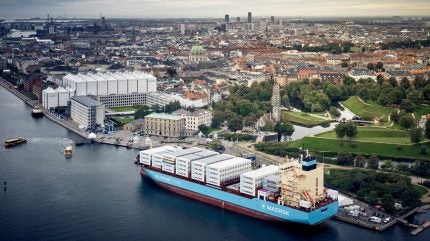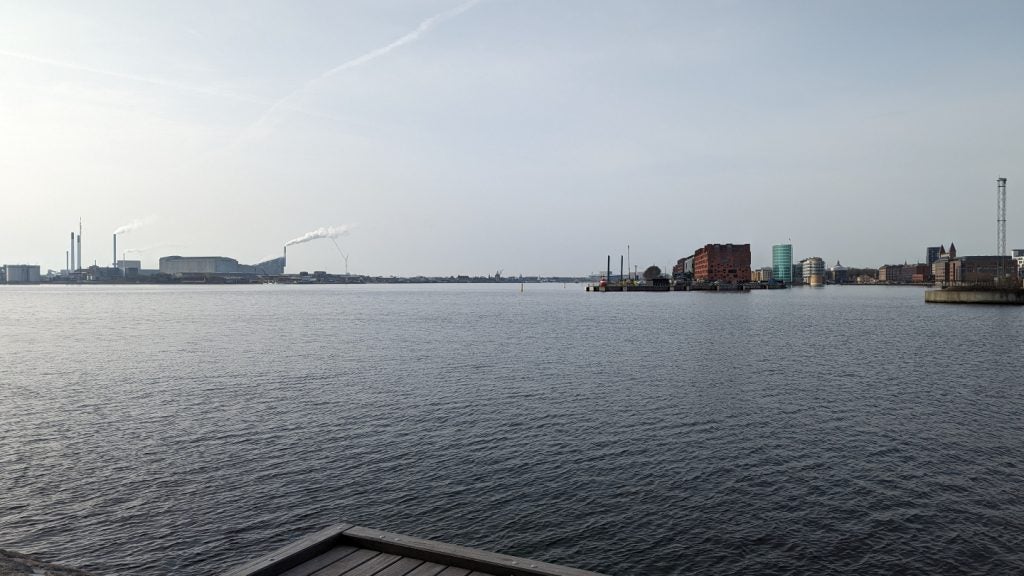
Denmark might be small but its impact on the global shipping industry is outsized and with some of Europe’s (if not the world’s) largest firms based in its capital city, Copenhagen has become one of the focal points for sustainable-focussed innovation as the industry looks for answers to its decarbonisation problems.
To find out more about what’s being done to support the future of maritime and the environment, Ship Technology took a tour of the city and spoke to some of its leading businesses and sustainability-focused start-ups.
Despite the widespread agreement that the industry needs to move away from current fossil heavy fuels, no single more sustainable fuel has appeared as a solid front-runner despite investment into a wide range of energy solutions including methanol, ammonia, hydrogen, and electricity.
So what are the leading fuels, and who is leading the fleet?
Maersk’s methanol push
After notably holding off on investment into LNG fuel, when it became the go-to for many companies looking to reduce sulphur emissions in line with the IMO’s International Convention for the Prevention of Pollution from Ships (MARPOL), Maersk has now become one of the leading companies pushing for the use of methanol.
In September 2023, the company deployed the world’s first methanol-powered feeder vessel the Laura Maersk on its intra-Europe trade and it has already welcomed two further ships powered by the fuel in 2024, with another 22 on the way.

US Tariffs are shifting - will you react or anticipate?
Don’t let policy changes catch you off guard. Stay proactive with real-time data and expert analysis.
By GlobalDataWhile methanol can reduce CO2 emissions by 60% to 95% compared to traditional fuels, its production can involve significant use of fossil fuels, and it also has a lower energy density than gasoline, leading some to question its viability as a truly more sustainable power source.
As a result, Maersk has focused specifically on green methanol, a version of the fuel produced using either biomass or captured carbon and hydrogen from renewable power sources to limit its lifecycle emissions.
Simon Bergulf, head of energy transition and operations at Maersk, explains the company’s decision to focus on the fuel: “It’s a known fuel, it has been sailed on before, and the regulations for our seafarers to sail with it already existed, it’s safe, and the engine was there.
“So we picked methanol because it was the greenest possible, the most capable, and it was available immediately. Whereas [alternatives such as] eDiesel can be possible, but we are far from being in the situation where we could actually scale it up and be cost effective.”

The case for ammonia
While methanol-powered container vessels are already out on the sea, ammonia has also become one of the main choices for maritime companies investing in a greener future.
Despite facing similar issues to methanol around potentially high levels of carbon emissions during production and a much higher cost than traditional fuel, the ‘younger’ fuel has its supporters.
Green ammonia, produced using renewable energy powered electrolysis, can be used as a completely zero carbon emissions fuel, though its NOx emissions would still need to be managed, and has been described by classification society DNV as a potentially “excellent source of zero-emission fuel.”
Maritime businesses and investment firms such as Copenhagen Infrastructure Partners (CIP) have invested heavily in scaling up the ammonia fuel sector.
Welcoming Ship Technology to CIP’s headquarters, Jens Joedal Andersen, vice president of CIP’s global service provider Copenhagen Infrastructure Service Co. (CISC), says that while the company doesn’t believe there is only one fuel to solve the industry’s issues, he believed ammonia was more scalable than alternatives such as methanol.
“If you want methanol or methane, you need to add CO2 and the key to that is that the CO2 is biogenic, otherwise we don’t achieve anything, and this biogenic CO2 is a scarce resource.”
Andersen also highlights a theoretically lower cost of the fuel compared to methanol: “If you want methanol or you want ammonia, the production costs for the [base] hydrogen are the same. For methanol, you then need to buy biogenic CO2, and likely transport it, before you add it.
“For ammonia, you take [Nitrogen] out of the air, and you add it. So, on a theoretical level, the price difference between methanol and ammonia is the price of the biogenic CO2,” he explains.
Wind’s role in the story
Despite the vitality of discovering sustainable fuels to power the world’s container, bulk, and tanker vessels, during Ship Technology’s trip to Copenhagen the role of wind was also touted by many of the companies interviewed.
Oceanbird is a wingsail concept backed by Alfa Laval and Wallenius Marine, which is hoping its solution will catch up with some of the many modern wind propulsion technologies already on the market.
Jonas Alvan, senior product manager for Oceanbird, describes the idea as a “real upstream solution” and says while it is currently unclear what role wind power may play in future regulations designed to improve shipping’s sustainability, he thinks wind will be used to propel vessels in the future, “no matter what the legislation says.”
The 40m x 14m sized wingsail technology will begin prototype testing in 2024 on both land and sea, and Alvan said the company believes it could save 5% on fuel consumption for vessels travelling on long voyages at sea, or around 10% for smaller vessels on shorter routes such as ferries.
As a result, technology like Oceanbird’s could be installed on vessels powered by future fuels as a way of reducing fuel consumption and thus partly addressing the issue of the higher costs associated with methanol and ammonia.



